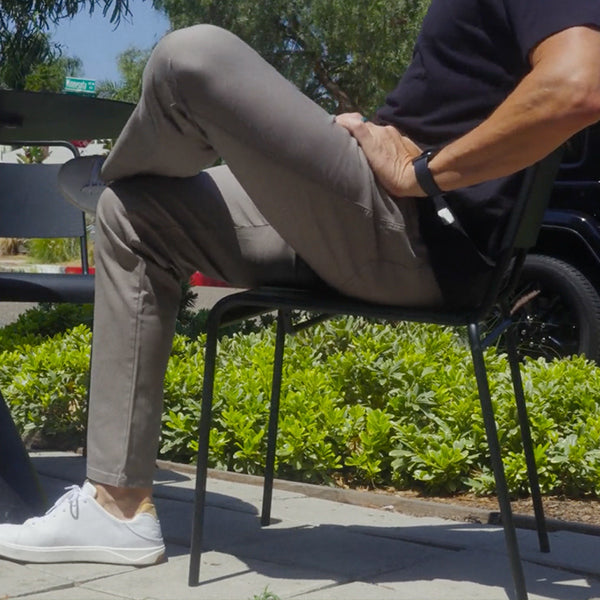Those who have followed us over the years know that we're anything but your average golf company. In addition to our love for golf, the Linksoul family consists of a passionate group of surfers, painters, writers, and photographers, among many other things. We also try to stay actively involved in the issues that affect us, our families, and our communities, including the incessant devastation inflicted on our environment.
Each month we team up with the Hill Street Country Club in featuring a new local artist's work in the gallery situated in the front of the Linksoul Lab headquarters in Oceanside, California. This month we are pleased to feature the work of local photographer Johnny Nguyen, who spent several days in Standing Rock, North Dakota last November, photographing the ongoing efforts to halt the construction of the Dakota Access Pipeline. We caught up with Johnny after his opening photo exhibit at the Linksoul Lab to get a better understanding of his photo journal entitled, "And If I Can Show You, You Would Never Leave Her."
Would you explain the meaning behind the title of your photo journal?
The pronoun “her” in the title represents Mother Earth. During my stay in Standing Rock, I connected heavily with the land. I appreciated her beauty and respected her power. My idea was to document my experience in a photo journal and share it with everyone in hopes to make people appreciate and protect what’s here, rather than exploring other planets.
How exactly did you find yourself in Standing Rock?
I’ve been tuning in here and there, following the updates as the movement grew. I remembered a call-out on Facebook to “check in” to Standing Rock after suspicion grew among the Morton County Sheriff Department, who was monitoring water protectors using Facebook. I think acting on that simple request and seeing so many others receptive to it really connected. I felt part of it. I was like, “I’m invested now.” A million people ended up checking in. After that, I was plotting to go. Thanksgiving was a perfect time, but plane tickets were really expensive, so that didn’t work out. Then, Standing Rock was served with an eviction notice to clear the camp by December 5, 2016, and I thought if it was to end, I was going to be there. Within 24 hours of the notice, I bought my plane ticket out.
Why is it so important to care about this issue?
I believe it's important to defend Standing Rock to set the precedence that water is more important than oil, and that native sovereignty should be respected. It irks me that humans are putting water and land at risk for a few thousand temporary jobs and profit for a few. More and more people in the world are recognizing this as well. Hopefully the successes of this movement will carry over to other movements, too.
What is the purpose of your photo journal?
The movement is nearly a year old. I was only there for three days. I cannot tell the full story of Standing Rock. However, I can tell my experience. I hope this photo journal depicts the spiritual feeling and emotion that took over me during my stay.
Which image is your favorite and why?
I’m really happy the way the circle prayer panoramic photo turned out. My idea was to capture the massive circle of water protectors enclosing the camp for a prayer with four individual shots. I didn’t know if it actually worked out until I developed the film and pieced them together. Plus, it’s the largest piece of art I’ve ever made at 6-feet-long. Also, the featured image which shows my hand touching the Missouri River. My campsite was facing the Missouri River. I cried at the sight of the river when I saw it one morning. Something came over me that I cannot explain. I felt connected to Mother Earth more so than ever. It’s just a hand over snowy ice, but it depicts a very special moment for me.
At your art show opening, you said Standing Rock is just one example in a much larger picture. Can you elaborate?
I believe I wanted to connect the fight at Standing Rock to all the other fights against injustices happening in America and worldwide. My hope is that we connect with these struggles, empathize with them, and find ways to be positive allies together. That way we can bring power back to the people to effectively combat these forces that have placed profit over people, self-interest over justice, and oppression over equality.
Why black and white photography?
I feel very comfortable seeing and shooting in black and white, and I love the classic look of tonal grays. It has this innate and natural ability to capture timelessness. At first glance, you might think that the photo was taken decades ago, until you realize you’re looking at a solar panel next to that water protector. I also intend to print this work in the darkroom. Shooting black and white, 35mm film will allow me to have the option to go back into the darkroom lab and print in the future.
How can others get involved?
Donating to the Water Protector Legal Collective (WPLC), the on-the-ground legal team at Standing Rock is the immediate need. This will help provide hundreds of water protectors with jail and court support. If you’re interested in donating, please go to www.waterprotectorlegal.org. Also, consider closing out personal accounts at banks that are directly investing in DAPL. These banks include: Wells Fargo, Bank of America, US Bank, Chase, and Citi Bank. Instead, open an account at a credit union. It’s a small but very empowering act. City of Seattle and City of Davis recently divested over three billion dollars of their city funds out of Wells Fargo. If anything, banks will have to think twice the next time they invest in an oil pipeline.
Where can we see more of your work? Instagram: @johnnynugyen









Leave a comment (all fields required)